#famous chinese contemporary artists
Explore tagged Tumblr posts
Text

Lady Agnew of Lochnaw (1892) 🎨 John Singer Sargent 🏛️ National Galleries Scotland 📍 Edinburgh, Scotland
Sargent’s dazzling and unforgettable image of Lady Agnew is one of the most famous of his many portraits of fashionable London society. For both the artist and his sitter, the painting was an instant success, establishing Sargent’s reputation as the portrait painter of choice for the London elite and immediately transforming the newly elevated Lady Agnew into a society celebrity.
Sargent was born in Florence and spent his childhood travelling across Europe with his wealthy American parents who restlessly followed the changing social seasons. In 1874 he entered the Paris studio of the stylish French portraitist, Carolus-Duran. The young Sargent combined the flamboyant style of his teacher with his study of old masters such as Rembrandt and Velázquez but was also influenced by Monet and Impressionism. His provocative and unconventional Portrait of Madame X caused a scandal at the Paris Salon exhibition in 1884; and, when Sargent settled in London in 1886, he initially found it difficult to find clients as his bravura, continental style of painting attracted suspicion. However, his dashing technical mastery and confident manner were ideally suited for aristocratic patronage and he soon won over his critics with his elegant, flattering portraits. When his portrait of Lady Agnew was shown at the Royal Academy in 1893, one contemporary observed: ‘London is at his feet … he has had a cracking success.’
The sitter was born Gertrude Vernon and married Andrew Noel Agnew in 1889. Her husband, fifteen years her senior, was a barrister and later an MP and deputy-Lieutenant in Wigtownshire; he succeeded his father as 9th Baronet of Lochnaw in 1892, shortly before Sargent embarked on this portrait. The exact circumstances behind the commission are not known, but the Agnews may have met the artist through mutual American friends. According to notes in her husband’s diary, work on the portrait progressed swiftly, and Sargent later recalled that it was painted in just six sittings.
Lady Agnew is shown seated in a Louis XVI chair against the backdrop of a Chinese silk hanging, both of which were standard props in Sargent’s studio. She is reported to have been of frail health; she recovered slowly from a severe bout of influenza in 1890 and was apparently still convalescing and suffering from exhaustion when she sat to Sargent, which may account for her slightly ghostly pallor in the painting. Lady Agnew fixes the spectator with an intelligent, faintly amused gaze but it is her elegant white silk dress and lilac sash that threaten to steal all our attention. There are brilliant passages of painting in the highlights, reflections and coloured shadows that show Sargent at his best as a painter of surfaces and textures, the ideal artist for a gilded, polished yet ultimately superficial society.
Sargent’s image of Lady Agnew helped her to become a leading light in fashionable circles, holding lavish salons in her London home. Ironically, the high costs of this hospitality meant that she was eventually forced to sell some family pictures including this portrait which was purchased by the Scottish National Gallery in 1925.
#Lady Agnew of Lochnaw#John Singer Sargent#oil painting#painting#oil on canvas#portrait#1892#american#Gertrude Agnew#National Galleries Scotland#Edinburgh#Scotland#art#artwork#art history
265 notes
·
View notes
Text

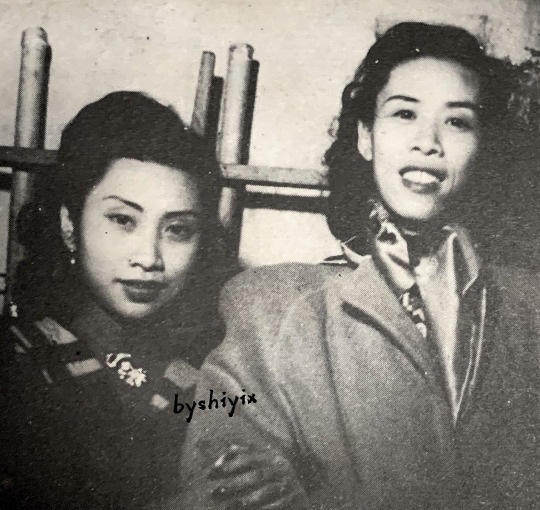
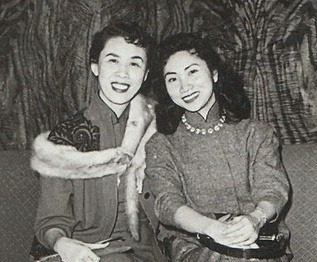
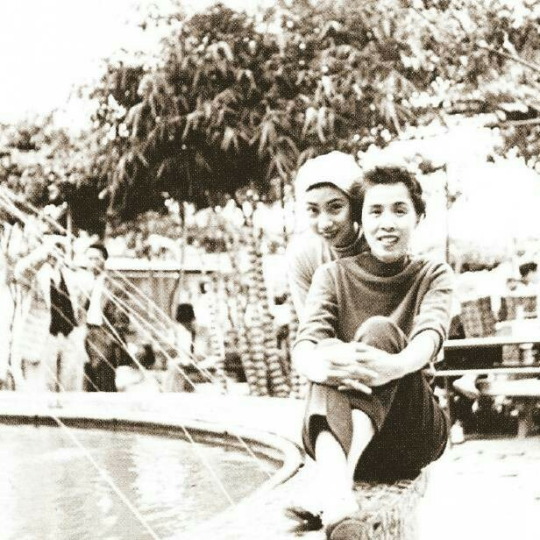

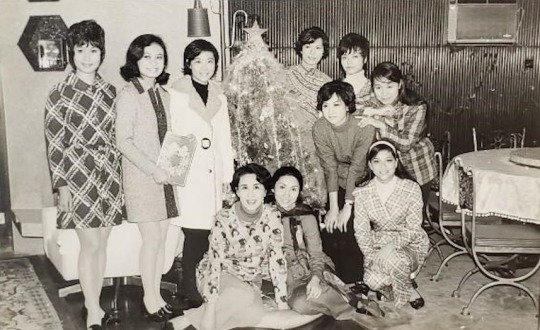

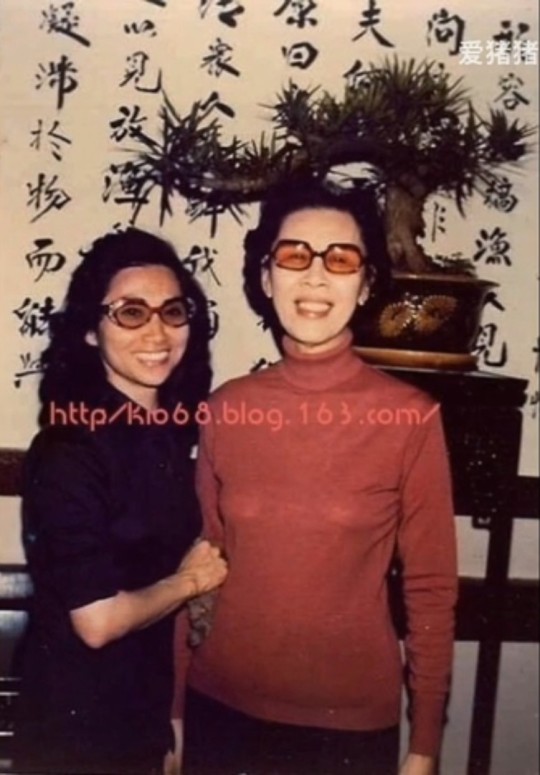
Female Queer Icons of Hong Kong // Yam Kim Fai (任劍輝) and Pak Suet Sin (白雪仙)
Photo 1: Promotional photo for 1955 contemporary movie The Model and the Car (玉女香車) (no video available) (Source: LCSD Museum Collection Search Portal)
Photo 4: Photo from Sin Fung Ming Opera Troupe's 1958 trip
Photo 5: Photo from a 1962 newspaper feature on Yam, Pak, and others at their (?) summer villa in Central, Hong Kong
Photo 6: Christmas celebrations with Yam, Pak, and their protégés of the Chor Fung Ming Troupe
Far and away the most iconic duo in Cantonese opera, Yam Kim Fai (任劍輝) and Pak Suet Sin (白雪仙) – commonly referred to simply as Yam-Pak (任白) – were famed for their partnership both on and off the stage… Click below to learn more!
Edit on 28/07/2023: Updated to link to a photo of the entrance to the Hong Kong Heritage Museum’s Pop Culture 60+ exhibit, and to add information regarding Yam and Pak's marriage status.
Iconic? How?
Yam-Pak are the face of Cantonese opera; you can't talk about the latter without mentioning the former. It's to the point where a gigantic picture of them graces the entrance to the Hong Kong Heritage Museum’s permanent exhibition on Hong Kong pop culture’s evolution across the past 60 years (“Hong Kong Pop 60+”) - they are the first thing you see upon entering!
Best known as the originators - with Yam playing the male leads and Pak the female leads - of five masterpieces of Cantonese opera, namely:
1. Princess Cheung Ping (帝女花) 2. The Legend of the Purple Hairpin (紫釵記) 3. The Dream Tryst in the Peony Pavilion (牡丹亭驚夢) 4. The Reincarnation of Lady Plum Blossom (再世紅梅記) 5. Butterfly and Red Pear Blossom (蝶影紅梨記) (Note: Princess Cheung Ping, Purple Hairpin, and Butterfly and Red Pear Blossom were made into abridged movie versions, with the Sin Fung Ming troupe members reprising their roles from the theatre productions. Also, the "Fragrant Sacrifice" (香夭) duet from Princess Cheung Ping (movie clip) is one of - if not the most - famous songs in Cantonese opera.)
Yam and Pak were the leading pair and co-founders of the legendary Sin Fung Ming Opera Troupe (仙鳳鳴劇團; 1956-1961), which is widely held to have pushed Cantonese opera forward as an artform due to Pak and scriptwriter Tong Tik Sang’s (唐滌生) emphasis on poetic libretti and adapting source material from Chinese literature and history. (Note: it has been common practice since the 1930's for Cantonese opera troupes to be founded by key actor(s).)
They were also very active in the Hong Kong film industry in the 1950's, being paired in over 40 movies together across roughly 8 years. One of those – the aforementioned Butterfly and Red Pear Blossom (蝶影紅梨記) – is the sole Cantonese opera movie on the Hong Kong Film Archive’s 100-Must See Hong Kong Movies list (IMDB list / archived version of the official PDF). It's a well-deserved inclusion - check out this beautifully-shot dance scene.
Even their post-retirement activities had a significant effect on the industry! In the early 1960’s, they held auditions for prospective students and provided - for free - systematic, hands-on training to those who passed; Yam and Pak even hired other veterans to teach skills they personally were not as familiar with. Prior to this, apprentices were expected to learn primarily from observing their masters, and to pay handsomely for the privilege. Yam-Pak’s methods proved exceedingly effective: the Chor Fung Ming Opera Troupe (雛鳳鳴劇團; 1963-1992) starring their apprentices reigned supreme in the 1970’s-1980’s. Following this success, Cantonese opera institutes - most notably the major 1900s-era guild, the Chinese Artists Association of Hong Kong (八和會館) - started to offer systematic coaching to young hopefuls in the 1980's.
Okay, so why are they queer icons specifically?
The lazy answer is that they're queer icons because nearly all of Yam's roles were male, so Gender is involved by default, and since most hit Cantonese operas of the time were romances, that means you get to see two female actors performing being in love onscreen (and also on stage, but there aren't any video recordings from back then). So far, so Takarazuka Revue.
Female actors playing male roles in Cantonese opera To give some context, each Cantonese opera performer specialises in one of four major role-types, and Yam was a sung (生) - i.e. an actor specialised in playing standard male roles. Female sung were fairly common in the 1910's-1930's due to women being banned from performing with men during that period, but when the ban lifted in the mid-1930's, many troupes shifted towards cis-casting. Yam was pretty much the only one whose popularity survived the transition. Just take a look at the huge number of Cantonese opera movies produced during the 1950’s-1960’s – you’ll be hard-pressed to find a female sung other than Yam, let alone one with top billing. Happily, thanks to Yam's immense popularity, her profilic film career (over 300 movies!), and the prominence of Sin Fung Ming works in the Cantonese opera canon, there has been a resurgence in female sung which endures to this day. Two noteworthy examples are Yam's protégé Sabrina Lee/ Loong Kim Sang (龍劍笙) - a star in her own right - and Joyce Koi/ Koi Ming Fai (蓋鳴暉), one of the biggest names still active in the industry. (Note: perhaps due to cinema being more "realistic" in nature, Yam's early movies often involved her playing female characters cross-dressing as men, including in some Cantonese opera movies. However, she received increasingly more male roles as her fame grew, and from the mid-1950's onwards she was playing male characters onscreen nearly exclusively-- even in non-Cantonese opera movies! See Photo 1 above.)
What sets Yam and Pak apart is that they were particularly known for their chemistry. Long before Sin Fung Ming's formation in 1956, the advertising copy for their first Cantonese opera movie together - Frolicking with a Pretty Maid in the Wineshop (酒樓戲鳳, 1952) - declared "Only this movie has Yam-Pak flirting on the silver screen" (source - 華僑日報 1952/05/23-26). And indeed, they were popular for their flirtatious duets: their Cantonese opera works invariably contained at least one, and such scenes made it into some of non-Cantonese opera (i.e. "contemporary") movies too. In fact, there are not one but two contemporary movies where Yam and Pak's characters are not paired up and yet still sing a duet together in such a way that their significant other(s) become convinced that the two are in romantically interested in each other - see 1952's Lovesick (為情顛倒) and 1956's The Happy Hall (滿堂吉慶) - a weirdly specific situation which doesn't crop up in the other, non-Yam-Pak movies I have seen.
Speaking of contemporary movies, let's talk about a certain plotline that keeps cropping up in works featuring the both of them and where Yam plays a woman! Six of the eleven movies which fit that criteria involve Yam's character cross-dressing as a man (a common characteristic across Yam's handful of female roles), and Pak's character falling for her. Nothing ever comes of it, of course, but, um. It was certainly a trend. Actually, even their very first movie together - 1951's Lucky Strike (福至心靈) - falls into this category.
Such storylines, and the emphasis on their chemistry, are particularly interesting given that both Yam and Pak remained ostensibly unmarried throughout. This was unusual for female performers of their stature, who tended to wed in their twenties, often to fellow-actors or wealthy men (e.g. Hung Sin Nui/紅線女, Fong Yim Fun/芳艷芬, and Tang Pik Wan/鄧碧雲)... In contrast, by the time Yam-Pak retired from the stage in 1961, they were both over 30 years old and without husbands.
Also, did I mention they were popularly believed to be living together? There doesn't seem to be any conclusive evidence either way... although it's a little strange that separate newspaper pictorials depicting "Yam at home" and "Pak at home" seem to be of the same location... however what is conclusive is that they did spent a lot of time together offstage. Pak has talked about how when they had no guests over, Yam would watch TV by herself while Pak was in the living room (source - p93), and protégé Mandy Fung/ Mui Suet Sze (梅雪詩) has said that Pak would sometimes cook for Yam at home (source - 03:53~). They would also celebrate birthdays, New Year's, and Christmas together (see Photo 6 for an example of the latter).
Shortly after Yam's passing in 1989, Pak set up the Yam Kim Fai and Pak Suet Sin Charitable Foundation (任白慈善基金) to support the arts and provide welfare for the elderly. In 1996, Pak made a large donation to Hong Kong University, resulting in one of the buildings being renamed Yam Pak Building (任白樓) in thanks (source).
Thanks for reading! Please feel free to DM me or send an ask if you have any questions, or are just interested in learning more.
If you made it here, have this bonus piece of trivia - Yam and Pak were also well-acquainted with Hong Kong's preeminent queer icon, Leslie Cheung (張國榮), who was a massive fan of theirs. Sadly there don't seem to be any pictures of them before Yam's passing, but here's one of Pak (centre) having afternoon tea with Cheung (left) and his long-term romantic partner Daffy Tong (唐鶴德) (right) at the Cova cafe in the Pacific Place shopping mall.
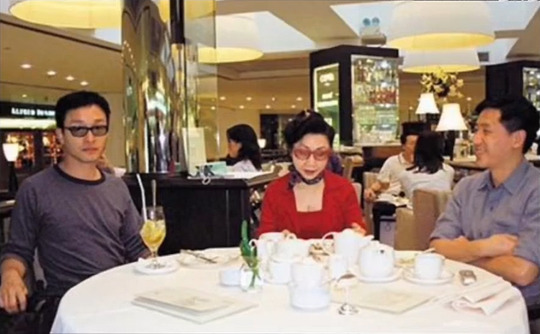
#wlw recommendations#sapphic#lgbtq#asian lgbtq#hong kong#theatre#cantonese opera#chinese opera#yam kim fai#leslie cheung#pak suet sin#yampak#yambak#pak sheut sin#bak sheut sin#hong kong queer icons#not me hastily adding tags because i keep forgetting certain ones
214 notes
·
View notes
Text












World Tessellation Day
World Tessellation Day is celebrated on June 17 every year. Tessellation is the art of tiling a plane using geometric shapes in the form of tiles that require specific measurements. This holiday is dedicated to appreciating the fascinating art of tessellation and honoring these math-inspired visual artists who don’t often get recognized. Today also allows kids to explore this art form as a hobby. While it’s all about creativity, it also requires analytical skills — a great exercise to boost young children’s left and right brain functions. Learn more about the activities you can do to celebrate World Tessellation Day.
History of World Tessellation Day
The origin of the mathematical art of creating patterns, or tessellation, dates back to 4000 B.C. when ancient Sumerians discovered the use of clay tiles as home and temple decorations. It wasn’t too long until the next civilizations quickly adopted tessellation both in art and architecture. The Arabs, Chinese, Egyptians, Japanese, Romans, Persians, and the Moors practiced the use of repeated patterns and geometric designs in their decorative arts. During the classical antiquity period in the 8th century, tessellation became a staple for mosaic tiling decorations using small square blocks called ‘tesserae.’
In the 4th century, one of the most famous tessellation art was made by the Muslim Moors in Grenada, Spain: the Alhambra, an Islamic tessellation artwork composed of countless tiles in geometric positions that were constructed for the residence and court of Mohammed ibn Yusuf Ben Nasr.
In 1619, Johannes Kepler conducted the first official and documented study of tessellation art. In his book “Harmonice Kundi,” he cited regular and semi-regular geometric designs that heavily influenced modern-day tessellation. He’s also the first person to explore and document the hexagonal features of honeycomb and snowflakes.
In 1891, Russian crystallographer Yevgraf Fyodorov explained in a more advanced study that every periodic tiling in a plane has one of 17 isometries. This study marks the first official recognition of tessellation as a mathematical study. This was further explored by Otto Kienzl and Heinrich Heesch in 1964, and Alexei Shubnikov and Nikolain Belov in 1964.
Today, contemporary artists introduced different modern permutations such as surreal landscapes, hand-print patterns, and paper tessellations.
World Tessellation Day timeline
4000 B.C. The Birth of Tessellation
Sumerians introduce tessellation using clay tiles.
4th Century The Most Famous Tessellation Art
Muslim Moors construct the Alhambra as a residence and court for Mohammed ibn Yusuf Ben Nasr.
1619 The First Study of Tessellation Art
Johannes Kepler studies and explains regular and semi-regular geometric designs of tessellation art.
1891 Tessellation as a Mathematical Study
Russian crystallographer Yevgraf Fyodorov introduces tessellation as a form of math.
World Tessellation Day Activities
Create your own tessellation art
Take tessellation courses
Try digital tessellation art
From tiles to paper designs, you can create your own tessellation art design by just using the simplest materials found in your home. Follow D.I.Y. tutorials on YouTube and let your creative juices flow.
Tessellation art classes are ideal for kids who show artistic and creative potential. Enroll your child in your local art school and let them take weekend classes to boost their creativity and analytical capacity.
Spend the day on your laptop and try out the latest tessellation trend: digital art patterns. There are several apps for tessellation making. Be sure to save your final product and upload it on your social media with the hashtag #TessellationDay
5 Interesting Facts About Tessellation
Only three regular polygons tile a plane
A cube in 3.D.
Tessellation is science
Three ways to construct a tessellation
The father of modern tessellation
Only a square, triangle, and hexagon can completely tile a plane.
A Cube in 3.D. is the only regular polyhedron that can independently tessellate.
Science supports that beehive honeycombs, snowflakes, and dried-up mud are all geometric.
The three categories of tessellation construction are translation, reflection, and rotation.
Dutch artist M.C. Escher is considered the father of modern tessellation.
Why We Love World Tessellation Day
It uses both the left and right brain
Tessellation in fashion is trending
It’s an underappreciated art
Tessellation art is a good exercise to be both creative and mathematical. Unlike other art projects, tessellating requires math while executing your creative vision. It’s perfect for kids’ brain development.
The minimalist era of fashion is on the rise. Tessellation designs of repeated patterns on clothes are hip and trendy. It’s a great excuse to wear these designs on World Tessellation Day.
Not many people know about the cultural, scientific, and mathematical history of tessellation. It’s a great way to introduce this to people to honor the artists and scholars who dedicate their lives to this art form.
Source
#Carboneras#Spain#España#summer 2021#original photogrpahy#architecture#cityscape#travel#vacation#tourist attraction#Portugal#Azulejo#Lisbon#façade#detail#Southern Europe#World Tessellation Day#17 June#WorldTessellationDay#original photography#landmark#Lisboa#geometry
9 notes
·
View notes
Text
Why so many shonen-ai live-action?
A lot of Japanese BL live-actions are manga adaptations. However, most of source IP are of a particular kind. Most of them seems to be shonen-ai.
A trend in Japanese live-action adaptations that I have noticed:
Most of them are soft/lite – little to no explicit content (sex, language, violence), never too intense and goes easy on well-established BL manga/novel tropes.
Such a setup has obvious benefits. This is probably meant to make it palatable to a larger audience, censors, etc. It is also for homonationalism soft-power, you see.
To educate and evoke empathy among a heterogenous audience towards the queer characters, it is more apt to make it more palatable, simple and understandable.
Manga and live-action are different mediums – they have different audience demographic, with a lot of overlap. Main target of BL mangas and novels continues to be (腐)fu-people [fandom: fujoshi, fudanshi and fujin irrespective of nationality]. BL live-action have audience outside this niche. This wider audience is not familiar with the quirks of BL. Example: one can watch a dozen BL live-action (that is not self-referential) without ever encountering concepts like seme and uke. This is not for a lack of seme uke dynamic. On the other hand, it is unlikely that one can go about reading BL manga and novels without learning those terms. Moreover, all that will be accepted/appreciated by a large-number of fu-people might not be accepted/appreciated by rest of the audience.
Transnational audience continue to be dominated by audience from the Global North owing to their greater purchasing power which also manifests in their ability to affect what BL is made. Western tastes dictating queerness in BL is no surprise part through censorship and part through ideas of right kind of queerness. Purchasing power has to be pandered to in the neo-liberal world. പിന്നെ അല്ല!
BL live-action is not always seen as the end product. The value of the IP only grows with it.
BL continues to be a niche area and there is only so much money going into BL production. Wider audience is probably a safer bet – lower risk and better returns.
In the end we get live-actions of BL manga and novels that are not necessarily the most popular, critically acclaimed or both.
There are probably a bunch of copyright/publisher related restrictions on adaptations with IP changing hands and publishers going out of business. Most live-actions are sourced from contemporary works.
Take for example Harada sensei’s works. So many of her works are intense and explicit. Out of all her works – popular and critically acclaimed – the one that was chosen for live-action adaptation was One Room Angel. It probably benefitted from canonical romantic ambiguity between the main characters.
Yoneda Kou got a live-action adaptation for her work in 2014. Since then, nothing.
Many BL (yaoi) manga artists such as Hinohara Meguru, Chise Ogawa, Ayano Yamane, Ike Reibun, Zariya Ranmaru and Rihito Takarai who are famous internationally are yet to get any live-action adaptation. I don’t think this trend will change anytime soon.
I mean, look at BLs that got live-action adaptations and Chil Chil BL award winners. Look at how manga popularity is playing out with live-actions.
Compare this with the short-lived 耽改 (dangai) phenomenon. Between early Chinese BL live actions and ban on live-action BL including censored adaptations (dangai) following the success of Word of Honor, a lot of very famous writers such as Priest, Chai Ji Dan, Shui Quan Cheng and Lan Lin, among others, got live-action adaptations, some censored and others not.
Right before dangai ban, a lot more contemporary and time-honored works attracted interest and investments for live-action adaptation. A bunch of them even landed in development hell.
It is also interesting to note what are stripped off from the source materials when adapted onto screen.
I probably got a bunch of things wrong since this analysis is not based on data. Instead, I’m relying on my fickle memory to guide me. I should probably do a proper analysis someday.
I am craving for more variety in BL live-action adaptations. I want more yaoi adaptations after this year’s deluge of live-action shonen-ai. I want a pinku eiga based on BL manga. I want another Sei no Gekiyaku (2020) level ero-manga adaptation. I want some gei-comi (bara) adaptation. Someone, please make the live-action adaptations of Gengoroh Tagame’s Fisherman’s Lodge and Ichikawa Kazuhide’s Fire Code. Some fire and ice, please.
9 notes
·
View notes
Text











Melanie Goemans(British)
“Walking my dogs in the early morning I notice the small seasonal shifts. I think about the quiet beauty in the everyday, particularly in the natural commonplace things, rarely celebrated. My paintings are inspired by what I see around me: the form of a tree; the long lines of twining stems; the intricacies of birds in flight. Often I am reminded of a poem or a piece of music and revisit an idea resonating there. References include Hardy, Yeats, Frost, Oliver, Thomas, de la Mare; Hahn, Schumann, Puccini, Bizet. Sometimes I draw or write under the layers of gesso and these charcoal smudges allow the gilding to shine in contrast. Working from projections of photographs I’ve taken, I trace the lines loosely with a fine square ended brush, observing the tonal shifts, and the marks build up the complicated patterns of the whole. Using traditional materials - oil, gold leaf, charcoal, gesso - my work draws attention to these fleeting moments and underscores their value.” Melanie Goemans 2023
Melanie grew up in the Lincolnshire fens, spending time in Italy between studying Florentine Renaissance Art at the Courtauld Institute of Art, University of London (BA Hons. and MA with distinction).
“Melanie places emphasis upon the transitory elements present in the landscape. In a large diptych, a slither of Ely’s skyline runs along the lower edge of the two canvases, dwarfed by a dog rose that arches above the townscape as if it were a firework. The intricately painted briar is given pictorial priority over the more famous cathedral, eclipsing it and the town against a monumental sky. With its focus on a natural subject, it has all the balance of a Chinese painted screen. ”
— Contemporary & County (2023)
Some images are via iamjapanese
15 notes
·
View notes
Text

John cage
Innovative, Experimental, and Provocative.
John Cage was an influential composer, philosopher, and artist who made significant contributions to the development of experimental and avant-garde music. His innovative ideas and radical approach challenged traditional notions of music and expanded the boundaries of what could be considered musical expression. Cage's influence can be observed in several key aspects:
Prepared Piano: One of Cage's most famous innovations was the concept of the prepared piano. By placing various objects, such as screws, bolts, and pieces of rubber, between the strings of a grand piano, he transformed the instrument into a percussive ensemble. This technique expanded the sonic possibilities of the piano, inspiring numerous composers to explore unconventional ways of playing and preparing instruments.
Indeterminacy and Chance Operations: Cage introduced the idea of indeterminacy into music, emphasizing the role of chance and randomness in the creative process. He used methods such as the I Ching (an ancient Chinese divination text) to determine musical elements, such as pitch, duration, and order. Cage's use of chance operations opened up new avenues for composition, challenging the notion of the composer as a sole authority and allowing for a more democratic approach to music creation.
Silence and Ambient Sound: In his most famous composition, 4'33", Cage explored the concept of silence and ambient sound. The piece consists of three movements in which the performer(s) remain silent, allowing the sounds of the environment to become the music. By embracing the idea that all sound can be musical, Cage encouraged listeners and composers to be more aware of the sonic environment and to appreciate the beauty in everyday sounds.
Expanded Notation and Graphic Scores: Cage experimented with alternative methods of musical notation, including graphic scores and unconventional symbols. His compositions often incorporated visual elements, allowing performers more interpretive freedom and encouraging them to engage with the graphical representation of the music. This approach influenced subsequent generations of composers who sought to break free from traditional Western notation and explore alternative means of musical communication.
Conceptual and Interdisciplinary Approaches: Cage's work extended beyond the realm of music, encompassing performance art, dance, theater, and visual arts. He collaborated with artists from various disciplines, blending different art forms together. This interdisciplinary approach to creativity has had a profound impact on contemporary music, leading to the emergence of multimedia performances and the integration of diverse artistic practices.
Cage's ideas and innovations have influenced generations of composers, performers, and artists, inspiring them to question established conventions, embrace experimentation, and explore new frontiers in music. His emphasis on individual expression, the democratization of the creative process, and the redefinition of what constitutes music continues to resonate with artists across genres and continues to shape the evolution of contemporary music.
2 notes
·
View notes
Text
Why Are Kochi-Based Kerala Tour Packages So Popular Among Travelers?
Kochi, also known as Cochin, is a vibrant city on the southwestern coast of India, famous for its rich history, diverse culture, and scenic beauty. As the gateway to Kerala, it is no surprise that Kochi-based Kerala tour packages have gained significant popularity among travelers. Whether you are a first-time visitor or a seasoned traveler, the charm of Kochi and its surrounding areas makes it an ideal destination. In this blog, we explore the reasons why these tour packages are so popular and why travelers choose them time and again.
1. A Blend of Tradition and Modernity
Kochi offers a fascinating mix of traditional Kerala culture and modern amenities. The city boasts historical landmarks such as the iconic Chinese Fishing Nets, Fort Kochi, the Mattancherry Palace, and the St. Francis Church, blending with contemporary attractions like luxurious resorts, shopping malls, and world-class dining experiences. Kochi’s unique combination of the old and the new appeals to all types of travelers, making it an attractive destination for those seeking both cultural enrichment and modern comfort.
2. A Perfect Base for Exploring Kerala
Kochi serves as the perfect starting point for exploring the rest of Kerala, which is known for its backwaters, beaches, hill stations, and wildlife sanctuaries. From here, travelers can embark on a variety of tour packages, including houseboat cruises in Alleppey, wildlife safaris in Thekkady, and nature walks in Munnar. The proximity of Kochi to these stunning destinations makes it a central hub for travelers exploring Kerala, further contributing to the popularity of Kochi-based tour packages.
3. Rich Cultural Heritage and Art Forms
Kerala is known for its distinct art forms, such as Kathakali, Mohiniyattam, and Kalaripayattu. Kochi, in particular, is a hub for cultural performances and art exhibitions. The city's Kochi-Muziris Biennale, a contemporary art exhibition, draws art lovers from around the world. Travelers can immerse themselves in the region's unique artistic culture, making their journey to Kochi a complete cultural experience. For those interested in traditional crafts and art, Kochi’s local markets offer an array of handmade souvenirs, such as coir products, spices, and Kathakali masks.
4. Exotic Kerala Houseboat Experience
One of the most famous attractions of Kerala is its backwaters, and Kochi-based tour packages often include an unforgettable houseboat experience. The backwaters of Alleppey and Kumarakom are just a short drive from Kochi, where travelers can board traditional Kerala houseboats for a serene cruise along tranquil waters, surrounded by lush greenery and picturesque landscapes. It’s an experience that is truly unique to Kerala and a must-do for every traveler.
5. The Appeal of Kerala's Cuisine
Kerala is renowned for its flavorful and aromatic cuisine, which includes dishes like Kerala Sadya, Malabar Biryani, and fresh seafood. Kochi, being a melting pot of cultures, offers a wide variety of dining options, from traditional Kerala-style eateries to upscale restaurants offering international fare. Kochi-based tour packages often include culinary tours, where visitors can savor the authentic flavors of Kerala while learning about the region’s rich food heritage.
6. The Best Travel Services for Every Need
At Kerala Travel by Gokulam Group, we understand that every traveler has unique needs and preferences. With years of experience and a deep passion for travel, we provide a wide range of travel services, ensuring that your trip to Kochi is as comfortable and memorable as possible. Our tour packages in Kochi are designed to offer a blend of adventure, relaxation, and cultural immersion. From premium taxi services in Kochi to Urbania booking in Kochi, we cater to every aspect of your journey.
We also offer specialized services like caravan packages in Kochi, which allow travelers to explore the natural beauty of Kerala in a luxurious and convenient way. Additionally, our Kerala houseboat tour packages give you a chance to experience Kerala’s backwaters in the most authentic manner. With our attention to detail and commitment to providing excellent service, we have established ourselves as one of the best tour operators in Kochi.
7. Affordable and Flexible Packages
Another reason for the popularity of Kochi-based Kerala tour packages is their affordability and flexibility. Whether you are a solo traveler, a couple, or a family, there is a package that suits your budget and requirements. These packages can be customized to include the attractions and activities that interest you the most, giving you the freedom to design your dream Kerala vacation.
Conclusion
Kochi is not just a city; it is a gateway to the enchanting beauty and cultural richness of Kerala. With its captivating mix of history, culture, nature, and modern amenities, it is easy to see why Kochi-based Kerala tour packages are so popular among travelers. Whether you are looking for a peaceful retreat, an adventurous escape, or a cultural exploration, Kochi offers something for everyone.
At Kerala Travel by Gokulam Group, Kerala tour packages from Kochi , we take pride in offering an extensive range of travel services to help you experience the best of Kochi and Kerala. Our tour packages, houseboat cruises, and other travel services are designed to provide you with authentic and immersive experiences, making your trip to Kerala unforgettable. Trust us to be your guide to the heart of Kerala—where adventure, culture, and natural beauty await you.
#Best tour operators in Kochi#Tour packages in Kochi#Kerala tour packages from Kochi#Taxi packages in Kochi#Caravan packages in Kochi#Urbania booking in Kochi#Urbania taxi in Kochi
0 notes
Text
The Vibrant Tapestry of Shanghai: Tradition Meets Modernity
Shanghai, often referred to as the Pearl of the Orient, is a vibrant metropolis that stands as a testament to China's rapid modernization and rich cultural heritage. Nestled along the Yangtze River Delta, Shanghai boasts a unique blend of Eastern traditions and Western influences, creating a captivating cultural mosaic that attracts millions of visitors each year.To get more news about shanghai culture, you can visit meet-in-shanghai.net official website.
The city's skyline is a striking juxtaposition of ancient temples and ultramodern skyscrapers, symbolizing the seamless integration of the past and present. The Bund, a famous waterfront area, epitomizes this blend with its colonial-era buildings set against the backdrop of the towering skyline of Pudong. Walking along the Bund, one can feel the echoes of Shanghai's cosmopolitan past while witnessing its futuristic ambitions.
Shanghai's cultural landscape is equally diverse. The city is renowned for its traditional Chinese arts, such as calligraphy, painting, and Peking opera, which continue to thrive alongside contemporary art forms. The Shanghai Museum, with its extensive collection of ancient Chinese artifacts, offers a glimpse into the region's storied history. Meanwhile, the contemporary art scene flourishes in areas like the M50 Art District, where modern galleries showcase the works of both local and international artists.
Culinary traditions in Shanghai are a delightful reflection of its multicultural essence. The city's cuisine, known as Hǎi pài cài, features a rich tapestry of flavors influenced by various regions of China and the world. From the savory xiaolongbao (soup dumplings) to the sweet and tangy flavors of Shanghai-style braised pork, the local food scene is a gastronomic adventure that tantalizes the taste buds.
Festivals and celebrations play a significant role in preserving and promoting Shanghai's cultural identity. The Shanghai International Film Festival and the China International Import Expo are just two examples of events that draw global attention and participation. Traditional festivities like the Chinese New Year and the Mid-Autumn Festival are celebrated with great fervor, showcasing the city's deep-rooted customs and community spirit.
In essence, Shanghai is a city where heritage and innovation coexist harmoniously. Its cultural mosaic, woven from threads of tradition and modernity, makes it a truly captivating destination for anyone seeking to experience the best of both worlds. Whether you are an art enthusiast, a culinary explorer, or simply a curious traveler, Shanghai promises an unforgettable journey through time and culture.
0 notes
Text
From Historical Fascination to Contemporary Innovation: The Journey of Chinoiserie
Chinoiserie, as a significant style in 18th-century European decorative arts, not only embodies the historical interplay of Eastern and Western cultures but also injects unique inspiration into modern art and design. Originating from Europe’s fascination with Chinese culture, it reinterpreted Chinese lacquerware, porcelain, silk, architecture, and natural aesthetics into an idealized and romanticized expression of the Orient. In contemporary design, Chinoiserie has not faded with time; instead, it has evolved in new forms, particularly within the context of French aesthetics, continuing to radiate distinctive vitality.
Chinoiserie’s inception dates back to the 16th-17th centuries when Chinese lacquerware, porcelain, and silk were introduced to Europe via the Silk Road and European merchants like the Dutch East India Company. These exotic luxuries, renowned for their unique aesthetics and superb craftsmanship, quickly became prized possessions among European aristocrats. By the 18th century, as Rococo style gained prominence, Chinese-inspired decorative art increasingly permeated European furniture, architecture, and painting designs, creating an artistic trend.
France was one of the major birthplaces of Chinoiserie, especially during the reign of Louis XV, when aristocrats incorporated Chinese elements into private residences and garden designs. French designers reimagined Chinese motifs by blending oriental landscapes and floral patterns with the curves of Rococo and the symmetry of classical aesthetics, creating an exotic decorative style. At the time, this trend reflected not only an aesthetic pursuit but also the aristocracy’s aspiration for luxury and culture.
Although Chinoiserie waned in the 19th century due to the rise of Neoclassicism and industrialization, it never disappeared completely. Since the late 20th century, with the deepening of globalization and the rise of cross-cultural design concepts, Chinoiserie has re-emerged as an art form integrating Eastern and Western cultures. Particularly in the contemporary expression of French aesthetics, it has taken on a new appearance.

Harrison Howard’s Chinoiserie Wallpaper Design for Pierre Frey
For example, Harrison Howard, an artist for the renowned French wallpaper and fabric brand Pierre Frey, drew inspiration from the famous Chinoiserie artist Jean-Baptiste Pillement. He created Chinoiserie wallpapers combining Chinese elements with various scenes. These works carry the fantastical qualities of Pillement’s art, evoking the mysterious and poetic charm of the Orient. Featuring soft pinks, blues, greens, and golds, the designs incorporate patterns and colors of blue-and-white porcelain, fused with red coral, creating a fresh, elegant, and light modern visual experience.

ChuCui Palace’s Cloud Poetry Brooch
Similarly, the contemporary Chinoiserie-inspired jewelry brand ChuCui Palace innovatively combines traditional Chinese meticulous painting techniques with Western jewelry setting methods to create iconic pieces such as the Cloud Poetry brooch. This brooch modernizes the traditional image of the Eastern dragon, preserving its intricate and opulent essence while avoiding the sharpness of traditional totems. The result is a dragon design that is humane, elegant, and flexible, successfully modernizing the classic symbol without losing its cultural roots. The dragon’s form balances realism and abstraction, retaining the traditional silhouette while incorporating streamlined, modern lines, aligning with contemporary jewelry’s trend toward artistry. The brooch captures the essence of traditional Chinese painting’s use of negative space, intertwining clouds with the dragon’s form to create a mysterious interplay of solid and void. Traditional Chinese carving techniques and jewelry craftsmanship were used, with gradients applied to the dragon’s scales for a nuanced, vivid visual effect. From the dual perspectives of Chinoiserie and contemporary aesthetics, this brooch conveys the spiritual meaning of traditional Chinese culture while offering new artistic value through modern jewelry techniques and innovative design.

John Galliano’s 1997 “Absinthe” Cheongsam for Dior
Another example is John Galliano’s 1997 Absinthe cheongsam, created for Dior’s spring/summer haute couture collection. Inspired by Chinese embroidery, this cheongsam features asymmetrical details such as mesh cutouts, modern fabric gloss, and bold color contrasts. These elements combine Chinoiserie aesthetics with the experimental and luxurious spirit of 1990s haute couture, breaking the conservative temperament of traditional cheongsams. The design retains the signature streamlined tailoring of cheongsams, emphasizing the feminine curves and highlighting the harmonious balance of strength and softness. The treatment of the neckline and shoulders echoes the simplicity and elegance of modern cheongsam design, resulting in a more theatrical visual effect than traditional counterparts.
Chinoiserie is not just a historical relic of 18th-century European decorative arts; it is a timeless and dynamic form of artistic expression. In contemporary design, Chinoiserie has been revitalized with new language, continuing the aesthetic characteristics of East-West cultural fusion while reflecting designers’ deep exploration of cultural diversity and artistic creativity in a globalized context. Whether in Harrison Howard’s wallpaper designs for Pierre Frey, ChuCui Palace’s jewelry art, or Galliano’s avant-garde fashion, these works breathe new life into Chinoiserie aesthetics through contemporary design techniques and creative perspectives. This style is not merely a reproduction of traditional cultural symbols but a profound dialogue on cultural understanding and artistic value in a contemporary context. The modern revival of Chinoiserie is not just a significant phenomenon in design but also a vivid testament to cultural integration, highlighting the boundless possibilities of art and its transcendent power.
0 notes
Text
Trendy Yukata Tops: A Blend of Tradition and Modern Fashion
Yukata tops are capturing attention as the perfect fusion of tradition and contemporary fashion. These garments offer a stylish, comfortable option for those who love the rich culture of Japan but want something that fits into their everyday wardrobe. With a wide variety of designs—from bold motifs to subtle patterns—there’s a yukata top for every occasion. Whether you're drawn to the classic charm of a black harajuku yukata top or intrigued by unique designs like a good luck koi yukata top, this fashion trend is worth exploring.
What Are Yukata Tops?
Yukata tops are inspired by the traditional Japanese yukata, a lightweight cotton kimono typically worn during the summer. These tops are modern interpretations, making them more versatile and suitable for casual wear. They maintain the unique elements of traditional yukata but with an updated twist.

Some popular variations include:
Harajuku-inspired designs: Offering bold, eye-catching colors and patterns that mirror the vibrant street fashion of Tokyo.
Motifs: From koi fish to waves and sunset themes, these designs evoke different aspects of Japanese culture.
Modern takes: Styles that blend elements of Japanese aesthetics with Western fashion for an easily wearable garment.
The Popularity of Yukata Tops in Modern Fashion
Yukata tops have gained significant popularity, especially in urban fashion circles. Many people are drawn to their unique combination of elegance, comfort, and versatility. The modern yukata tops can be worn in various settings, from casual outings to festivals or even as part of a layered outfit during cooler months.
In recent years, the trend of incorporating traditional Japanese styles into modern fashion has surged. This shift can be attributed to a growing interest in cultural diversity and the increasing global appreciation of Japanese artistry and design.
Trending Designs to Watch
Whether you're shopping for a red fish yukata top or the striking sunset yukata top, there’s something for everyone in this ever-expanding collection of designs. Below are a few designs that have been particularly trendy in 2024:
1. Waves Yukata Top
The waves yukata top is a captivating design that draws inspiration from the iconic Japanese wave patterns. These swirling, intricate designs are reminiscent of the famous "Great Wave off Kanagawa" print by artist Hokusai. The waves motif symbolizes strength and resilience, making this design a powerful fashion statement.
Why it’s popular: The waves design combines history with modern aesthetics, creating a timeless piece that blends seamlessly into any wardrobe.
Perfect for: Casual outings, beach vacations, or as part of a layered ensemble.
2. Chinese Style Yukata Top
The chinese style yukata top introduces a new twist by integrating elements of Chinese artistry. With intricate dragon motifs or floral designs, this variation combines two rich cultures into one unique piece. These designs often feature vibrant colors like gold, red, and black, giving them an elegant, regal touch.
Why it’s popular: The merging of Chinese and Japanese motifs offers a unique, cross-cultural fusion that appeals to those who appreciate both traditions.
Perfect for: Special occasions, festivals, or a sophisticated night out.
3. Good Luck Koi Yukata Top
The good luck koi yukata top is not just a stylish choice but also a meaningful one. Koi fish are significant in Japanese culture, symbolizing perseverance, strength, and good fortune. A koi-inspired design can be a symbol of personal growth and good luck, making it both a fashionable and symbolic choice.
Why it’s popular: It connects with people who are looking for more than just a pretty design—it carries cultural significance and positive energy.
Perfect for: Personal milestones, celebrations, or anyone seeking to embrace symbolism in their style.
4. Red Fish Yukata Top
The red fish yukata top showcases the iconic red fish motifs commonly seen in Japanese folklore. The color red in Japanese culture is associated with good fortune, happiness, and protection from evil spirits. This top brings bold color to the forefront, making it an eye-catching option.
Why it’s popular: Its vibrant color and cultural symbolism make it a standout piece that pairs well with neutral or black bottoms.
Perfect for: Festivals, casual wear, or anytime you want to make a bold fashion statement.
5. White Wolf Yukata Top
The white wolf yukata top taps into Japanese mythology, where wolves are seen as guardians and protectors. This design often features a powerful image of a white wolf, symbolizing strength and loyalty.
Why it’s popular: This design resonates with individuals who admire strength and nature, blending mythical symbolism with fashion.
Perfect for: Evening events, nature-inspired outfits, or those seeking a meaningful design.
6. Sunset Yukata Top
The sunset yukata top is another favorite, with its warm colors of orange, red, and purple reflecting the beauty of a sunset. The design often incorporates soft, flowing elements that create a calm, peaceful aesthetic. This top is ideal for creating a relaxed, yet chic look.
Why it’s popular: The warm, vibrant colors offer a laid-back yet stylish look that can complement any casual outfit.
Perfect for: Day trips, vacations, or evening strolls.
Why Choose Yukata Tops?
There are several reasons why yukata tops are becoming a must-have in many wardrobes.
Versatility
Yukata tops can be paired with a variety of outfits, whether you choose to dress them up or down. They can be styled with jeans, skirts, or even shorts, making them perfect for multiple occasions.
Cultural Significance
Wearing yukata tops is a way to connect with and appreciate Japanese culture. Many designs carry deep symbolism, from the koi fish to the waves, which resonate with people seeking meaning in their clothing choices.
Comfort and Breathability
Made from lightweight materials like cotton, yukata tops are breathable and comfortable, making them a perfect choice for warmer months. Their loose, relaxed fit offers a flattering silhouette without sacrificing comfort.
Fashion-forward Design
With modern interpretations of traditional designs, yukata tops provide a chic, contemporary twist on a classic garment. They offer something different from the typical Western fashion trends, giving wearers the chance to stand out with unique, eye-catching patterns.
How to Style Your Yukata Top
To make the most of your yukata top, consider these styling tips:
Pair with minimalist accessories: Yukata tops often feature intricate designs, so keeping accessories simple lets the garment shine.
Add a belt for shape: While yukata tops tend to have a looser fit, a belt can help define your waist and add extra style to the look.
Layer with jackets: A stylish jacket or cardigan over a yukata top can create an effortlessly chic look, especially for cooler months.
Mix with modern pieces: Pair your yukata top with modern, casual pieces like skinny jeans or a sleek skirt to balance traditional and contemporary styles.
Conclusion
Yukata tops have evolved from traditional Japanese clothing into a fashionable and versatile garment loved by people worldwide. From the bold waves Yukata top to the symbolic good luck koi yukata top, these garments offer more than just style—they carry cultural significance and a rich history. With their breathability, comfort, and timeless design, they’re a perfect addition to any wardrobe, whether for casual wear or special occasions. Embrace the beauty of yukata tops and explore the variety of stunning designs that make this trend truly unique.
0 notes
Text
Step into History: The Allure of Stair Auctions
Stairs are more than just a functional element of architecture—they are a reflection of artistic trends, engineering ingenuity, and the cultural history of their time. From grand staircases that grace palatial estates to simple yet elegant wooden stairs in country homes, staircases have served as silent witnesses to the passage of time and the stories of those who tread upon them. Stair auctions have emerged as a unique platform for showcasing these architectural treasures, drawing attention to their historical and artistic significance. As architectural treasures, stairs have become a fascinating niche in the world of auctions, attracting collectors, designers, and history enthusiasts alike.
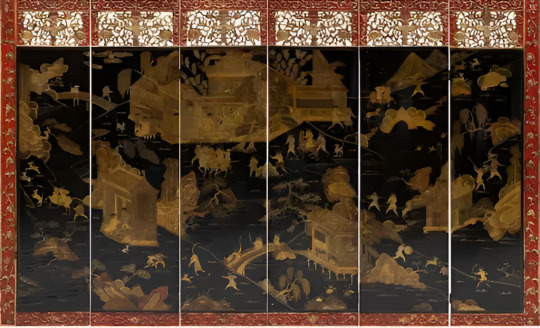
The Evolution of Stair Design
The design of staircases has evolved alongside advancements in architecture and engineering. In ancient civilizations, staircases were often constructed from stone and used in monumental structures like pyramids and temples. The Romans refined staircase design, introducing curves and more intricate forms. During the Renaissance, staircases became a canvas for artistic expression, with grand spiral designs and ornate balustrades adorning castles and manors.
The Industrial Revolution further expanded possibilities, as new materials such as cast iron and steel allowed for lighter and more elaborate designs. In modern times, staircases have transcended their utilitarian purpose to become focal points in homes and public spaces, blending form with function.
Staircases at Auction
While entire staircases are not the most common items at auctions, parts of staircases—such as handrails, balusters, and decorative elements—often find their way into auction catalogs. These pieces can offer collectors and interior designers a chance to own a fragment of history or incorporate antique charm into modern designs.
Historic staircases from notable buildings or designed by famous architects are particularly sought after. For example, the staircase from a historic theater or an ornate spiral staircase from a 19th-century mansion can fetch high prices at auction. Such items not only hold architectural value but also serve as conversation pieces that link the past with the present.
Why Stair Auctions Are Unique
Stair auctions appeal to a diverse audience, from architectural salvage enthusiasts to collectors of historical artifacts. These auctions are a window into the craftsmanship and artistry of bygone eras, showcasing materials, and techniques rarely seen in contemporary construction.
For collectors, stair auctions provide an opportunity to own a piece of history, while for designers, they offer inspiration and materials to create unique interiors. Moreover, stair auctions can be a sustainable choice, giving new life to materials and structures that might otherwise be discarded.
The Role of Auction Houses
Auction houses specializing in architectural salvage often highlight stair-related items as centerpiece lots. These items are typically accompanied by detailed histories, emphasizing their provenance and significance. The competitive bidding that surrounds these pieces reflects the growing appreciation for the artistry and historical importance of staircases.
A Unique Addition to Your Collection
In an upcoming auction, Auction Daily will feature a remarkable Chinese export black lacquer and parcel-gilt six-panel screen. While not a staircase, this exquisite item reflects the same principles of craftsmanship and historical richness often seen in stair auctions. The screen's intricate design and gilded details make it a striking addition to any collector’s portfolio or interior design project.
Stair auctions, like other niche categories, offer a chance to step into history, celebrating the beauty and craftsmanship of architectural elements that have shaped our spaces and lives. Whether you're a collector, designer, or history enthusiast, these auctions are an opportunity to own a piece of artistry and heritage.
0 notes
Text
Art has always been a profound reflection of culture, society, and human thought. In the modern world, art has become an integral part of everyday life, from the towering murals in urban landscapes to intricate designs in advertisements. But what truly shapes these creative expressions? One of the most significant influences on modern art and design is religion. Across history and into contemporary times, various religions have left indelible marks on the way we perceive and create art. This essay delves into how different religions have influenced modern art and design, exploring the unique ways in which each tradition has contributed to this rich tapestry.
Among the most prominent influences on modern art is Christianity. Its impact is particularly evident in traditional forms of art and architecture, which have continued to inspire contemporary creations. For centuries, Christianity has provided artists with themes of divinity, morality, and human suffering. One of the most famous examples is the Sistine Chapel, where Michelangelo’s breathtaking frescoes illustrate scenes from the Bible. These works have not only set a high standard for artistic excellence but also shaped the Western art canon. Even in modern times, artists draw inspiration from Christian motifs—be it in the form of reimagined Biblical scenes, symbolic use of crosses, or abstract representations of spiritual themes. Christianity’s emphasis on storytelling has also influenced narrative-driven art forms such as film and graphic novels, showcasing how deeply ingrained it remains in modern creative practices.
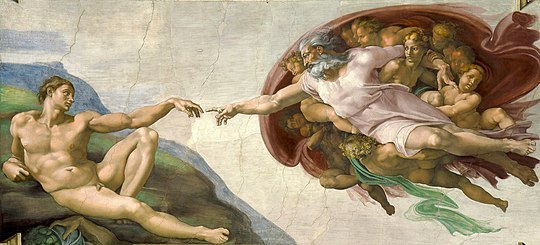
image credit: https://en.wikipedia.org/wiki/The_Creation_of_Adam
Another religion that has profoundly influenced contemporary art is Taoism. Rooted in the principles of balance, harmony, and the essence of existence, Taoist philosophy lends itself to abstract and minimalist art. Taoist-inspired artworks often emphasize the interplay between emptiness and form, inviting viewers to contemplate the natural flow of life. This influence is evident in modern design practices, especially in architecture and interior design, where the concept of “wu wei” (effortless action) informs spatial arrangements that promote tranquility and balance. Artists like Xu Bing have incorporated Taoist principles into their works, using traditional Chinese calligraphy and modern techniques to bridge the gap between ancient spirituality and contemporary aesthetics. Through these interpretations, Taoism continues to shape how we perceive and engage with art in the modern world.
Islam, with its emphasis on geometric patterns, calligraphy, and aniconism (the avoidance of figural representation), has also had a significant impact on modern art and design. Islamic art’s intricate patterns and motifs have found their way into contemporary graphic design, fashion, and even digital art. For instance, tessellations inspired by Islamic geometry have become a popular trend in modern architecture, blending traditional designs with cutting-edge technology to create visually stunning spaces. The art of Arabic calligraphy has also gained global recognition, with contemporary artists using it to convey both spiritual messages and modern themes. By adapting these timeless elements, Islamic art continues to resonate with audiences around the world, demonstrating its relevance in today’s artistic landscape.
Hinduism, one of the oldest religions, has long been a source of inspiration for artists. Its rich mythology, vibrant imagery, and symbolic representations offer endless possibilities for creative exploration. Traditional Hindu art, with its depictions of gods and goddesses in elaborate detail, has influenced contemporary art forms such as animation, graphic novels, and film. The visual storytelling found in Hindu temple carvings and paintings has inspired modern artists to experiment with narrative art. Additionally, the use of sacred symbols like the lotus, Om, and mandalas has permeated global art and design, often serving as motifs in yoga studios, wellness brands, and home décor. Hinduism’s emphasis on the interconnectedness of all life aligns well with modern themes of sustainability and ecological awareness, further enriching its influence on contemporary creative practices.
Buddhism’s impact on modern art and design is equally profound. Its teachings on mindfulness, impermanence, and enlightenment have inspired artists to create works that encourage introspection and spiritual awakening. The serene imagery of Buddha statues, the meditative qualities of mandalas, and the minimalist aesthetics of Zen art have found a place in modern art galleries, digital media, and even public spaces. Many contemporary artists use Buddhist concepts to address issues like mental health, environmental conservation, and the quest for inner peace. The popularity of mindfulness in today’s culture has also brought Buddhist-inspired designs into mainstream branding and product design, further underscoring its influence.
Shinto, the indigenous religion of Japan, has contributed significantly to modern art, particularly through its influence on anime and manga. Shinto’s reverence for nature and its belief in the presence of kami (spirits) in all things are themes frequently explored in Japanese animation and comics. Iconic works like Studio Ghibli’s films often depict lush natural landscapes imbued with spiritual significance, reflecting Shinto’s core principles. This connection to nature has also influenced global environmental art movements, with artists drawing on Shinto’s perspective to advocate for ecological harmony. Beyond anime and manga, Shinto’s aesthetic sensibilities can be seen in minimalist design trends, such as wabi-sabi, which celebrate imperfection and transience.
In conclusion, the influence of religion on modern art and design is both profound and multifaceted. Christianity, Taoism, Islam, Hinduism, Buddhism, and Shinto have each contributed unique perspectives and elements to contemporary creative practices. By drawing on these rich traditions, modern artists and designers continue to explore themes of spirituality, identity, and human experience. This dynamic interplay between religion and art not only preserves cultural heritage but also inspires innovation, ensuring that the legacy of these traditions lives on in new and meaningful ways.
Sources
Christian Study Library
https://finearts.uvic.ca/research/blog/2019/10/22/artists-discuss-the-radical-influence-of-buddhism-on-contemporary-art/
https://japanese.mythologyworldwide.com/the-connection-between-shinto-and-japanese-art/
1 note
·
View note
Text



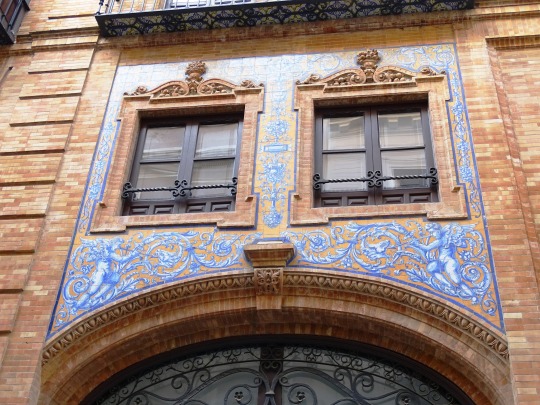
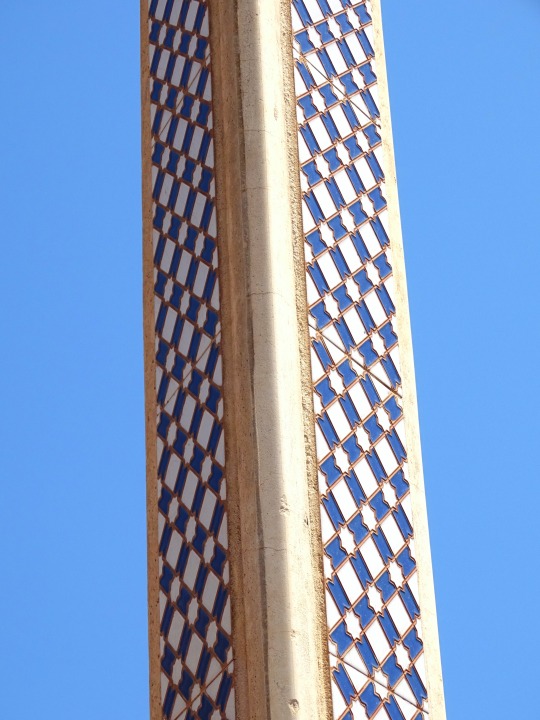


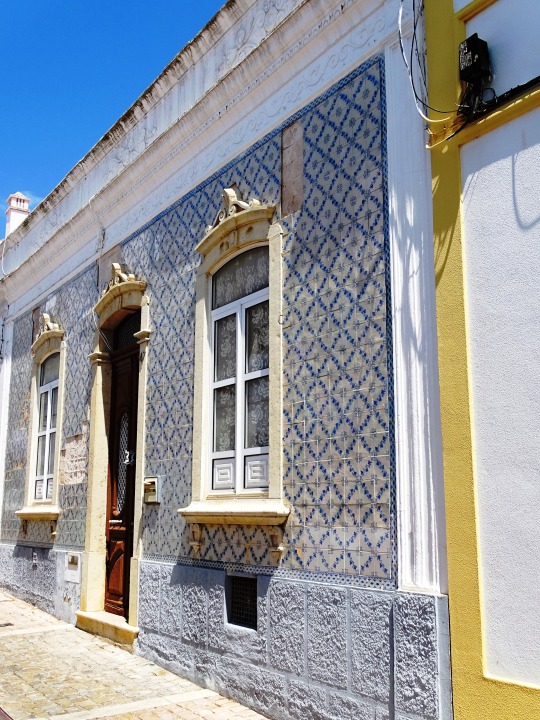

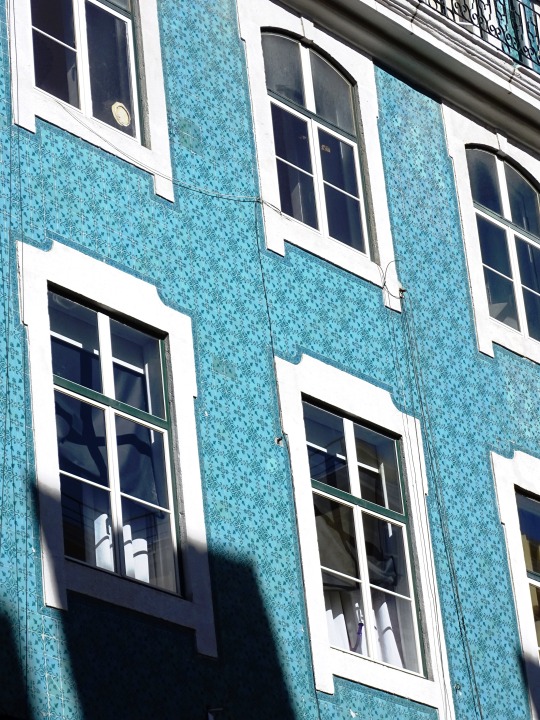


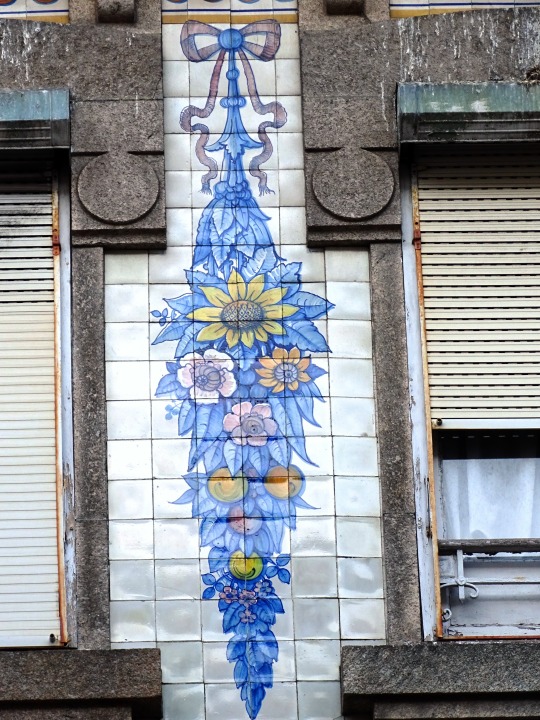


World Tessellation Day
World Tessellation Day is celebrated on June 17 every year. Tessellation is the art of tiling a plane using geometric shapes in the form of tiles that require specific measurements. This holiday is dedicated to appreciating the fascinating art of tessellation and honoring these math-inspired visual artists who don’t often get recognized. Today also allows kids to explore this art form as a hobby. While it’s all about creativity, it also requires analytical skills — a great exercise to boost young children’s left and right brain functions. Learn more about the activities you can do to celebrate World Tessellation Day.
History of World Tessellation Day
The origin of the mathematical art of creating patterns, or tessellation, dates back to 4000 B.C. when ancient Sumerians discovered the use of clay tiles as home and temple decorations. It wasn’t too long until the next civilizations quickly adopted tessellation both in art and architecture. The Arabs, Chinese, Egyptians, Japanese, Romans, Persians, and the Moors practiced the use of repeated patterns and geometric designs in their decorative arts. During the classical antiquity period in the 8th century, tessellation became a staple for mosaic tiling decorations using small square blocks called ‘tesserae.’
In the 4th century, one of the most famous tessellation art was made by the Muslim Moors in Grenada, Spain: the Alhambra, an Islamic tessellation artwork composed of countless tiles in geometric positions that were constructed for the residence and court of Mohammed ibn Yusuf Ben Nasr.
In 1619, Johannes Kepler conducted the first official and documented study of tessellation art. In his book “Harmonice Kundi,” he cited regular and semi-regular geometric designs that heavily influenced modern-day tessellation. He’s also the first person to explore and document the hexagonal features of honeycomb and snowflakes.
In 1891, Russian crystallographer Yevgraf Fyodorov explained in a more advanced study that every periodic tiling in a plane has one of 17 isometries. This study marks the first official recognition of tessellation as a mathematical study. This was further explored by Otto Kienzl and Heinrich Heesch in 1964, and Alexei Shubnikov and Nikolain Belov in 1964.
Today, contemporary artists introduced different modern permutations such as surreal landscapes, hand-print patterns, and paper tessellations.
World Tessellation Day timeline
4000 B.C. The Birth of Tessellation
Sumerians introduce tessellation using clay tiles.
4th Century The Most Famous Tessellation Art
Muslim Moors construct the Alhambra as a residence and court for Mohammed ibn Yusuf Ben Nasr.
1619 The First Study of Tessellation Art
Johannes Kepler studies and explains regular and semi-regular geometric designs of tessellation art.
1891 Tessellation as a Mathematical Study
Russian crystallographer Yevgraf Fyodorov introduces tessellation as a form of math.
World Tessellation Day Activities
Create your own tessellation art
Take tessellation courses
Try digital tessellation art
From tiles to paper designs, you can create your own tessellation art design by just using the simplest materials found in your home. Follow D.I.Y. tutorials on YouTube and let your creative juices flow.
Tessellation art classes are ideal for kids who show artistic and creative potential. Enroll your child in your local art school and let them take weekend classes to boost their creativity and analytical capacity.
Spend the day on your laptop and try out the latest tessellation trend: digital art patterns. There are several apps for tessellation making. Be sure to save your final product and upload it on your social media with the hashtag #TessellationDay
5 Interesting Facts About Tessellation
Only three regular polygons tile a plane
A cube in 3.D.
Tessellation is science
Three ways to construct a tessellation
The father of modern tessellation
Only a square, triangle, and hexagon can completely tile a plane.
A Cube in 3.D. is the only regular polyhedron that can independently tessellate.
Science supports that beehive honeycombs, snowflakes, and dried-up mud are all geometric.
The three categories of tessellation construction are translation, reflection, and rotation.
Dutch artist M.C. Escher is considered the father of modern tessellation.
Why We Love World Tessellation Day
It uses both the left and right brain
Tessellation in fashion is trending
It’s an underappreciated art
Tessellation art is a good exercise to be both creative and mathematical. Unlike other art projects, tessellating requires math while executing your creative vision. It’s perfect for kids’ brain development.
The minimalist era of fashion is on the rise. Tessellation designs of repeated patterns on clothes are hip and trendy. It’s a great excuse to wear these designs on World Tessellation Day.
Not many people know about the cultural, scientific, and mathematical history of tessellation. It’s a great way to introduce this to people to honor the artists and scholars who dedicate their lives to this art form.
Source
#Carboneras#Mojácar#Spain#España#summer 2021#original photogrpahy#architecture#cityscape#travel#vacation#tourist attraction#Sevilla#Albufeira#Portugal#Azulejo#Lisbon#façade#detail#Southern Europe#World Tessellation Day#17 June#WorldTessellationDay
17 notes
·
View notes
Text


Interview: The Imprint Of A Dad Will Remain On The Son, And Then The Son On His Son:Heartening Interview With The Good Chinese Ink Painter Hung Hoi (熊海) About His Artistic Family
Art is not only for pleasure these days. More and more people buy art pieces for investment purposes. Thus, a busy market for art has been formed in Hong Kong. In an art market, a “price” is the amount at which a buyer is willing to purchase a piece of art from an artist. Sometimes, the price may simply be a result of the fame or marketing effort of the artist. It does not represent the true worth of an artist. The perceived worth can be subjective too. Sometimes, the price is often a trend-following exercise. When an artist becomes “hot”, buyers take positions in market uptrends and try to profit from the situation. If an artist loses his popularity, he will become haggard and lonely. Price for his artwork will drop and there may be no offer at all for the price that he is insisting on.
I adore Hung Hoi (熊海), the great master of Chinese ink painting in Hong Kong. He said, “A good artist should not be manipulated by the market. Market can come and go. He should follow his heart and paint what he believes. In this way, he creates demand and does not let demand control his supply. An artist should not behave like a trader!”
Master Hung was of an Indonesian Chinese origin. His family moved back from Indonesia to the Fujian Province of China many decades ago. In the 1970s, his father熊俊山(by translation, Hung Chun San), also a famous painter, came to settle down in Hong Kong. Success was born from extreme hardship. The family was poor, Master Hung could not speak a word of Cantonese, they got no relative or friend here, and the art background of Master Hung was not academically recognised. Master Hung had no choice but worked as an antique restoration apprentice in Quarry Bay.
Master Hung said, “I have never given up on myself. I attended art classes and took part in art competitions. Winning these competitions, step by step, paid off in the end. I became known and so galleries, art managers and dealers approached me. Slowly, even international buyers came to me. My goals are simple: I don’t want a lot of money. I simply want a sense of financial security so that I can continue what I wish to paint. I therefore took up part-time teaching jobs in the School of Professional and Continuing Education of the Hong Kong University. Wow, I have been teaching visual art there for more than 30 years. ‘Teaching others teaches myself’! I learnt much from my art students as they are inspiring too!”
A new art form has been developed in Hong Kong since the 1960s and it is called “New Ink Art”(新水墨). It combines contemporary painting concepts and skills with the ancient Chinese art of calligraphy, and traditional Chinese landscape painting.
I asked Master Hung, “You are one of the masters of the New Ink Art movement. How do you feel?” He replied, “I love Hong Kong. The city is economically dynamic and culturally tolerant. People here encourage each other to try new things. It is very lucky that there are also buyers in Hong Kong who dare to buy art works with novel ideas. This may be one of the reasons why I could create as freely as I could; and make new artistic attempts! Art trends nowadays do not mean significantly for me!”
Hung Fai (熊輝), also another established ink painter in Hong Kong, is the son of Master Hung. I really wish that one day, I could interview them together. Is it that the imprint of a dad will forever remain on his son? I am waiting for the answer. Meanwhile, please watch my interesting interview with Master Hung Hoi: https://www.youtube.com/watch?v=gV5c3XbXzBY
Maurice Lee
Master Hung's Exhibition https://youtu.be/98WOdSopo3w?si=m5p8mmR7YJ0AiE3h Acknowledgement-onairpower
0 notes
Text
Exploring the Unique Charm of the Bronx, Queens, Brooklyn, NJ, and CT
The New York City metropolitan area is more than just skyscrapers and fast-paced life; it’s a blend of boroughs and neighboring regions, each with its own unique character and appeal. The Bronx, Queens, Brooklyn, New Jersey (NJ), and Connecticut (CT) all contribute to the area’s incredible diversity, culture, and lifestyle options. Whether you’re looking to explore history, try international cuisines, enjoy scenic views, or experience urban and suburban life, each of these areas has something unique to offer. Here’s a deep dive into what makes each of these regions a fascinating part of the Greater New York area.
The Bronx
A Snapshot of the Bronx’s History and Culture
The Bronx, one of NYC’s five boroughs, is known for its rich cultural history, including the birthplace of hip-hop. From art museums to cultural centers, the Bronx celebrates a vibrant mix of traditions and influences that have shaped its identity over the decades.
Unique Attractions in the Bronx
The Bronx Zoo, one of the world’s largest urban zoos, is a must-visit for families and animal lovers. Another gem is the New York Botanical Garden, which spans 250 acres of beautifully curated gardens. The Yankee Stadium, home of the New York Yankees, brings sports fans from across the country. For those interested in arts, the Bronx Museum of the Arts offers contemporary exhibitions celebrating diverse artists.
Neighborhoods in the Bronx
Popular neighborhoods include Riverdale, known for its quiet, tree-lined streets and affluent vibe, and Fordham, with its historic architecture and energetic college-town feel. South Bronx is seeing a resurgence in popularity due to its artistic scene and thriving community.
Queens
Queens as a Melting Pot of Cultures
Queens is the most ethnically diverse urban area in the world. Here, you can find neighborhoods dedicated to various cultures, making it a food paradise for those interested in authentic international cuisines. From Indian to Greek to Chinese, Queens represents the world within a borough.
Popular Sites and Activities in Queens
Astoria Park, with its stunning views of Manhattan, is a favorite among locals and visitors alike. The Museum of the Moving Image in Astoria celebrates the history and evolution of film and media, while Flushing Meadows-Corona Park is a sprawling space that includes the iconic Unisphere from the 1964 World’s Fair. Citi Field, home to the New York Mets, is another popular attraction.
Neighborhoods in Queens
Jackson Heights, known for its rich blend of South Asian, Latino, and other communities, is a must-visit for food lovers. Forest Hills offers a more suburban feel with easy access to green spaces and shopping, while Astoria has become a hip and bustling area attracting young professionals and artists.
Brooklyn
Brooklyn’s Rise in Popularity
Brooklyn has become synonymous with trendy neighborhoods, artisanal markets, and cultural hotspots. Once considered NYC’s quieter sibling, Brooklyn has risen to fame with neighborhoods that boast unique lifestyles, art, and music scenes.
Iconic Landmarks and Activities in Brooklyn
The Brooklyn Bridge, offering stunning views of Manhattan’s skyline, is an architectural marvel and a favorite for walkers and photographers. Prospect Park is a local favorite for picnics, sports, and outdoor concerts. DUMBO, known for its cobblestone streets and art galleries, has become one of Brooklyn’s top destinations. Other must-sees include Coney Island’s historic amusement park and the Brooklyn Museum.
Neighborhood Highlights
Williamsburg is famous for its hip cafes, street art, and music venues. Park Slope is a family-friendly neighborhood with a mix of historic brownstones and modern amenities. Brooklyn Heights offers classic charm with its picturesque waterfront and tree-lined streets, attracting both locals and tourists.
New Jersey (NJ)
New Jersey’s Connection to NYC
Just across the Hudson River, New Jersey provides an alternative for those who want proximity to NYC with more living space and suburban comforts. NJ’s closeness to New York makes it a convenient location for commuters, with easy access to both urban life and scenic landscapes.
Attractions in Northern New Jersey
Liberty State Park offers breathtaking views of the Statue of Liberty and the Manhattan skyline. The Meadowlands Sports Complex is a top destination for sports enthusiasts, hosting events for both the New York Giants and New York Jets. For family outings, the Adventure Aquarium in Camden and the Liberty Science Center in Jersey City are popular attractions.
Neighborhoods and Cities in NJ
Hoboken, with its lively nightlife and beautiful waterfront, has a vibrant community feel. Jersey City has seen a boom in development and offers a wide range of cultural and dining experiences. Montclair, known for its tree-lined streets and historic homes, is a favorite for families seeking a suburban feel with a city vibe.
Connecticut (CT)
The Appeal of Connecticut’s Proximity to NYC
Connecticut’s close proximity to NYC makes it an ideal location for those who want the balance of suburban life with city access. With charming towns, natural beauty, and historic sites, CT offers a relaxed lifestyle with an upscale feel.
Scenic Destinations in CT
Connecticut’s coastal towns like Mystic and New Haven provide picturesque waterfront views and a peaceful atmosphere. Mystic Seaport Museum is a popular destination, offering a glimpse into maritime history. Yale University in New Haven, one of the Ivy League’s historic institutions, is also worth a visit for its beautiful architecture and cultural significance.
Notable Neighborhoods and Cities in CT
Greenwich, known for its upscale homes and shopping districts, is one of the most affluent areas in the state. Stamford is a bustling city with corporate offices, parks, and a lively downtown area. Westport offers scenic beauty along the coastline and is famous for its arts community and theater scene.
Conclusion
Each of these regions—the Bronx, Queens, Brooklyn, NJ, and CT—adds its unique flair to the Greater New York City area. From the urban pulse of the Bronx and Brooklyn to the cultural richness of Queens, and from the scenic charm of New Jersey and Connecticut to their suburban comforts, these areas cater to various lifestyles and interests. Whether you’re visiting or considering a move, exploring these areas offers a glimpse into the diverse character and vibrant life that define this incredible part of the country.
0 notes